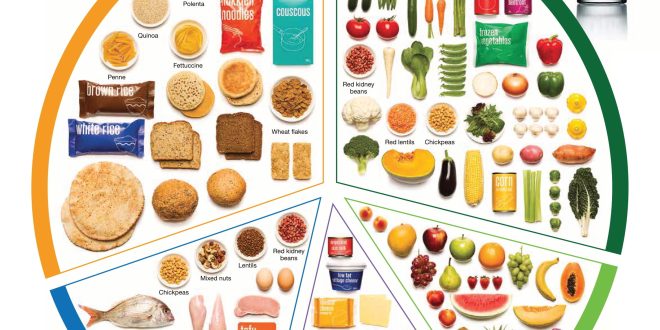Reducing junk food consumption in children is a common concern for parents. While completely eliminating treats might seem appealing, a more balanced approach that considers both the potential harm of excessive junk food and the benefits of occasional indulgence is often more effective. So, how do you strike that balance? Let’s explore when to take a firm stance on limiting junk food and when to adopt a more relaxed attitude. It’s a tricky line to walk, but, hey, we’re all just trying to raise healthy and happy kids, right?
Understanding the Impact of Junk Food
Defining Junk Food
What exactly constitutes junk food? Well, it’s not always black and white, is it? Generally, when we talk about junk food, we’re referring to those tempting treats and snacks that are high in sugar, salt, and unhealthy fats, and, let’s be honest, offer very little in the way of actual nutritional value. Think about it: chips, candies, sugary drinks… the usual suspects. You know, the stuff that makes you feel good in the moment but maybe not so great later on.
Health Risks Associated with Excessive Junk Food Consumption
Okay, so here’s the not-so-fun part. Too much junk food can lead to a whole host of health problems. We’re talking about things like obesity, which is a biggie, as well as an increased risk of developing type 2 diabetes. And it doesn’t stop there – cardiovascular problems can also rear their ugly head. Plus, if kids are filling up on junk, they’re missing out on essential nutrients, leading to deficiencies that can impact their growth and development. Scary stuff, isn’t it?
Psychological Effects of Junk Food
But it’s not just about physical health, you know? Junk food can also mess with our heads. Think about those intense cravings you get for certain sugary or salty snacks. It’s almost addictive, right? Some studies suggest that junk food can actually alter the reward pathways in the brain, making us want it even more. And that can create a really unhealthy cycle. It’s like, you eat it, you feel good for a minute, then you crash and want more. Ugh.
When to Take Action: Setting Boundaries and Limiting Access
Establishing Clear Rules and Expectations
Alright, so when do you put your foot down? I think the first step is to set some clear and consistent rules about junk food. Kids thrive on structure, even if they don’t always seem like it. Explain to them why you’re limiting certain foods and what the benefits are of eating healthier. Keep it simple and age-appropriate. And, most importantly, be consistent. If you say no chips during the week, stick to it! I know, easier said than done.
Controlling the Home Environment
Seriously, if you don’t want your kids eating junk food, don’t bring it into the house! It’s like, out of sight, out of mind, right? Instead, stock up on healthy alternatives like fruits, veggies, yogurt, and nuts. Make them easily accessible and appealing. Cut up some carrots and celery with hummus, or put out a bowl of colorful fruit. You’d be surprised how much kids will eat when they have healthy options readily available. Okay, maybe not surprised. But hopeful!
Navigating Social Situations (Parties, School Events, etc.)
Okay, this is where it gets tricky. Birthday parties, school events… they’re basically junk food central! One strategy is to talk to your child beforehand about making healthy choices. Maybe they can have one treat and then focus on the healthier options available. Another idea is to bring your own healthy snack to the event. It’s not always the easiest thing to do, but it can help you feel more in control.
Dealing with Resistance and Tantrums
Let’s be real, limiting junk food is probably going to lead to some resistance. Tantrums are pretty much a given at some point, aren’t they? The key is to stay calm and consistent. Acknowledge your child’s feelings, but don’t give in. Try offering a healthy alternative or distracting them with an activity. And remember, it’s okay to say no. You’re the parent, and you’re doing what’s best for their health. Even if they don’t see it that way right now.
When to Relax: The Importance of Moderation and Flexibility
The Pitfalls of Restrictive Dieting
Here’s the thing: being too strict about junk food can actually backfire. If you completely ban certain foods, your child might just crave them even more. It can also lead to rebellion and an unhealthy relationship with food in general. The goal isn’t to create a sense of deprivation, but rather to teach them how to make smart choices.
Teaching Children About Balance and Moderation
Instead of just saying “no junk food,” try teaching your kids about balance. Explain to them that all foods can fit into a healthy diet, just in different amounts. Help them understand that some foods are better for their bodies than others, but that it’s okay to enjoy a treat every now and then. It’s all about teaching them to make informed choices.
Allowing Occasional Treats and Indulgences
Let’s face it, life is too short to never eat ice cream! Occasional treats are part of a balanced diet and can actually help prevent feelings of deprivation. The key is to incorporate them without guilt or anxiety. Maybe you can have a “treat night” once a week where everyone gets to choose their favorite indulgence. Or perhaps you can allow a small dessert after dinner a few times a week. It’s all about finding what works for your family.
Focusing on the Big Picture: Overall Dietary Patterns
Don’t sweat the small stuff too much. Instead of obsessing over every single cookie your child eats, focus on their overall dietary patterns. Are they eating plenty of fruits, vegetables, and whole grains? Are they getting enough protein and healthy fats? If the answer is yes, then a little bit of junk food here and there isn’t going to derail their health. It’s the consistent habits that truly matter.
Practical Strategies for Reducing Junk Food Consumption
Substituting Healthy Alternatives
Swap out those processed snacks with some yummy and healthy alternatives! Instead of chips, try baked sweet potato fries. Instead of sugary soda, try sparkling water with a splash of fruit juice. Get creative and experiment with different recipes. You might be surprised at how much your kids enjoy healthy versions of their favorite treats. Like homemade smoothies packed with fruits and veggies. Sneaky, right?
Involving Children in Meal Planning and Preparation
Get your kids involved in the kitchen! Let them help you plan meals, shop for groceries, and prepare food. When kids are involved in the process, they’re more likely to try new things and make healthier choices. Plus, it’s a great way to spend quality time together. Maybe you can have a “family cooking night” once a week where everyone gets to pitch in.
Making Healthy Food Fun and Appealing
Healthy food doesn’t have to be boring! Get creative with how you present it. Use cookie cutters to make fun shapes out of fruits and vegetables. Create colorful salads with different textures and flavors. Serve food in fun containers or on skewers. The more visually appealing you make healthy food, the more likely your kids are to eat it. You know, presentation is key!
Leading by Example: Modeling Healthy Eating Habits
Kids are always watching us, whether we like it or not. So, if you want your kids to eat healthy, you need to lead by example. Make sure you’re also eating plenty of fruits, vegetables, and whole grains. Limit your own intake of junk food. And talk to your kids about why you’re making these choices. They’ll be more likely to follow suit if they see you doing it too. Plus, you’ll be healthier for it!
In the end, finding the sweet spot between limiting junk food and allowing for occasional treats is key to raising healthy and happy kids. It’s about creating a positive relationship with food and teaching them how to make informed choices. So, go ahead and experiment with different strategies, find what works best for your family, and remember to be patient and kind to yourself along the way. It’s a journey, not a destination! And hey, maybe share your own tips and tricks – we could all use a little help on this parenting gig, right?
 Beverage Zone
Beverage Zone




